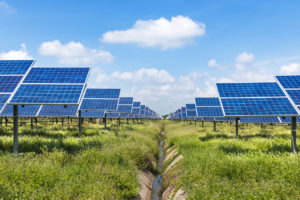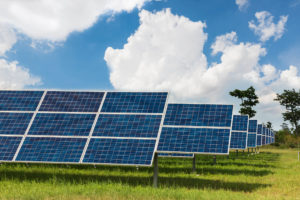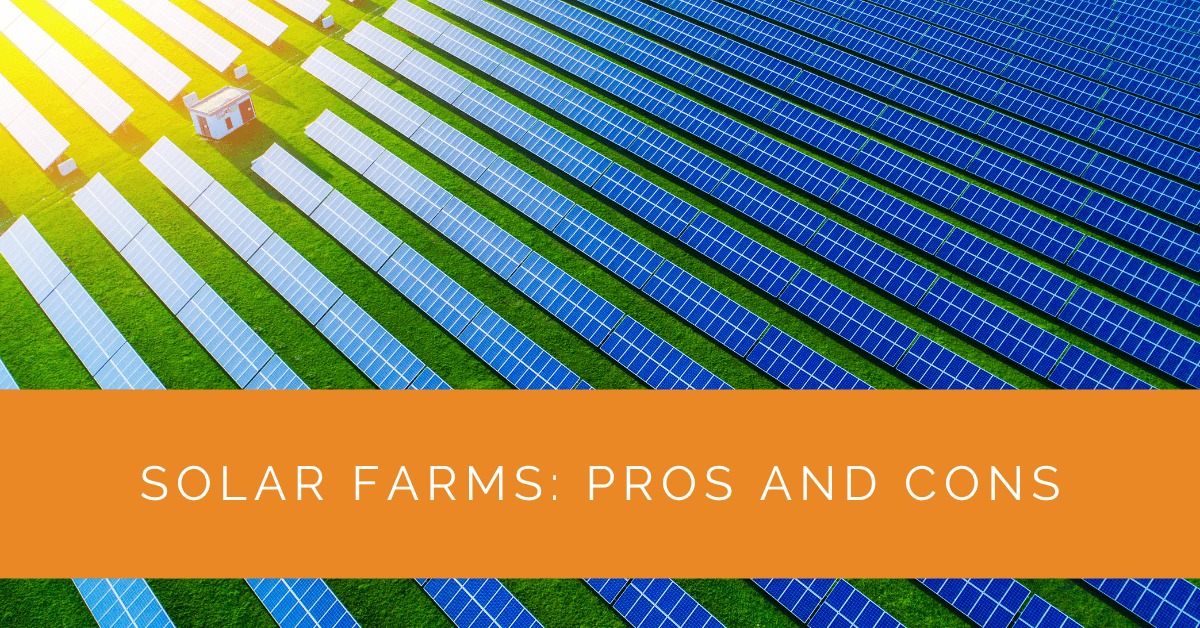Solar farms have emerged as a vital component of the renewable energy landscape, harnessing the abundant power of the sun to provide clean and sustainable electricity. As the world increasingly embraces alternative energy sources, it is crucial to explore in-depth the pros and cons of solar farms to make informed decisions about their implementation.
Contents
Key Takeaways
- Solar farms offer many advantages, including harnessing clean and renewable energy, reducing carbon emissions, and promoting energy independence and economic growth.
- However, challenges such as high initial investment, land requirements, intermittent energy generation, visual impact, environmental considerations, and energy storage must be mitigated.
- By embracing innovative approaches, ongoing research, and sustainable practices, we can maximize the benefits of solar farms and pave the way for a greener and more sustainable future.
Pros of Solar Farms
Solar farms offer many advantages contributing to a greener and more sustainable future. Let’s delve into each of these benefits in greater detail:
Harnessing Clean and Renewable Energy
Solar farms tap into the vast potential of clean and renewable energy derived from the sun. Through photovoltaic (PV) cells, solar farms convert sunlight directly into electricity. This process operates without any combustion or moving parts, ensuring that solar energy generation is emission-free, non-polluting, and environmentally friendly.
Reduction in Carbon Emissions
One of the most significant advantages of solar farms is their remarkable contribution to reducing carbon emissions. By generating electricity without burning fossil fuels, solar farms prevent the release of greenhouse gases into the atmosphere. This reduction in carbon emissions aids in mitigating climate change, curbing air pollution, and promoting a healthier planet for current and future generations.
Energy Independence
Solar farms are crucial in achieving energy independence for communities and countries. By harnessing solar power, regions can reduce their reliance on finite fossil fuel resources, volatile oil markets, and foreign energy imports. This transition to renewable energy sources enhances energy security, stimulates local economies, and fosters self-sufficiency in meeting electricity demands.
Economic Opportunities
The rapid growth of the solar industry brings about substantial economic opportunities. Solar farms’ development, installation, operation, and maintenance create employment across various sectors, ranging from manufacturing and construction to engineering and research. This job creation drives economic growth, fosters innovation, and helps build a robust and sustainable green economy.
Financial Savings
Solar farms can lead to significant financial savings for both communities and individuals. Once the initial investment is recovered, solar energy becomes virtually free, as sunlight is abundantly available and does not require expensive fuel procurement. Communities that embrace solar farms can substantially lower their electricity costs, resulting in considerable savings for residents, businesses, and public institutions. Moreover, solar power offers stability against volatile energy prices, shielding consumers from escalating electricity costs in the long run.
Efficient Land Utilization
Solar farms optimize land utilization by harnessing solar energy on vast tracts of land that may not be suitable for other purposes. Solar farms minimize conflicts with agricultural activities and natural habitats by utilizing these underutilized or low-value areas. Careful planning, site selection, and ecosystem-friendly construction practices ensure a harmonious coexistence between solar farms and other land-based activities, promoting sustainable land use and preserving valuable ecosystems.

Cons of Solar Farms
While solar farms bring significant benefits, it is important to consider their limitations and potential drawbacks. Let’s explore the cons of solar farms in greater detail:
High Initial Investment
One of the primary challenges associated with solar farms is the high initial investment required. The costs involved in installing solar panels, acquiring suitable land, and establishing the necessary infrastructure can be substantial. However, viewing this investment as a long-term commitment with substantial returns, including reduced operational costs, energy savings, and environmental benefits is crucial. Furthermore, ongoing advancements in solar technology and economies of scale steadily drive down installation costs, making solar farms more economically viable.
Land Requirement
Solar farms require significant land areas to accommodate many solar panels. This requirement can raise concerns about potential conflicts with land use for agriculture, ecosystems, or other purposes. However, through careful land selection, land-use planning, and sustainable land management practices, solar farms can be developed to minimize the impact on agricultural activities and protect important natural habitats. Additionally, innovative approaches like agri-voltaics, which combine solar energy production and agricultural practices, can maximize land efficiency and promote dual land use.
Intermittent Energy Generation
A key limitation of solar farms is the intermittent nature of solar energy generation. Solar power production is directly influenced by sunlight availability, making it dependent on weather conditions and daily cycles. Cloudy days, nighttime, and seasonal variations can impact energy output. However, advancements in energy storage technologies, such as batteries and pumped hydro storage, enable the storage of excess energy generated during peak sunlight hours for later use during low sunlight periods. Integrating energy storage systems ensures a more reliable and consistent energy supply from solar farms.

Visual Impact
The visual impact of solar farms is a subject of debate and consideration. Some individuals may find the appearance of large-scale solar panel arrays less aesthetically pleasing, particularly in scenic or natural areas. Striking a balance between renewable energy deployment and preserving visual aesthetics is crucial. Innovative design approaches, such as landscaping, low-profile mounting systems, and integrating solar panels into existing structures, can help mitigate visual impacts and promote visual integration within the surrounding environment.
Environmental Considerations
While solar farms contribute significantly to reducing greenhouse gas emissions, their development and operation can have certain environmental considerations. During the construction phase, activities such as land clearing and grading may temporarily disrupt local ecosystems and habitats. However, careful planning, adherence to environmental regulations, and implementing measures to minimize environmental impact, such as re-vegetation and wildlife habitat preservation, can mitigate these concerns. Additionally, ongoing research and development focus on improving the environmental sustainability of solar panel manufacturing, recycling programs, and responsible end-of-life management.
Energy Storage Challenges
Solar farms generate electricity when the sun shines, but energy demand varies daily. This discrepancy creates challenges in balancing supply and demand in real time. Effective energy storage solutions are vital to bridge this gap and ensure a stable and reliable power supply. While energy storage technologies are advancing rapidly, further research and development are needed to enhance energy storage systems’ scalability, cost-effectiveness, and efficiency. Continued investments in energy storage infrastructure will contribute to a more resilient and flexible grid system.
Case Study: Implementing a Solar Farm to Maximize Sustainable Energy Production
Background
At Solar Panels Network USA, our mission is to lead the transition towards sustainable energy. Our extensive experience in solar installations has allowed us to innovate and implement large-scale solar farms, significantly contributing to cleaner energy and reduced carbon emissions.
Project Overview
We were approached by a community interested in developing a solar farm to reduce their dependency on fossil fuels and promote economic growth through renewable energy. The community’s goals included achieving energy independence, reducing electricity costs, and creating local job opportunities.
Implementation
Our team conducted a thorough site analysis to select an optimal location for the solar farm. We considered factors such as sunlight availability, land use compatibility, and minimal environmental disruption. The selected site was an underutilized piece of land, ensuring efficient land utilization and minimal conflict with agricultural activities.
We deployed advanced photovoltaic (PV) technology to harness the sun’s energy. The installation process involved setting up a vast array of solar panels capable of converting sunlight directly into electricity. We also integrated state-of-the-art energy storage systems to address the intermittent nature of solar energy and ensure a stable power supply.
During the installation, we prioritized sustainable practices, such as re-vegetation of the area and habitat preservation, to minimize environmental impact. Our commitment to ecological balance was integral to the project’s success, demonstrating that solar farms can coexist harmoniously with nature.
Results
The solar farm exceeded expectations by generating a significant amount of clean energy, thereby reducing the community’s carbon footprint. The transition to renewable energy not only enhanced energy security but also stimulated local economic growth. The project created numerous jobs in installation, maintenance, and ongoing operations, contributing to the community’s financial well-being.
Financially, the community witnessed a marked decrease in electricity costs. The long-term savings from utilizing free sunlight for energy production were substantial, proving that the initial investment was a prudent decision. Additionally, the community enjoyed protection from fluctuating energy prices, thanks to the stability provided by solar power.
Summary
Our implementation of the solar farm showcased the vast potential of renewable energy to transform communities. By focusing on sustainable practices, innovative technology, and economic benefits, we demonstrated that solar farms are not just an environmental asset but also a driver of economic growth. Solar Panels Network USA remains committed to delivering top-quality solar solutions, ensuring a greener and more sustainable future for all.
Expert Insights From Our Solar Panel Installers About Solar Farms: Pros and Cons
As an experienced solar installer, I’ve seen firsthand how solar farms can significantly reduce carbon emissions. This not only benefits our environment but also promotes a healthier planet for future generations.
Senior Solar Installer
Investing in solar farms can seem daunting initially, but the long-term financial savings are substantial. Once the initial costs are covered, solar energy is virtually free, making it an economically smart choice.
Lead Solar Technician
Solar farms provide a unique opportunity to optimize land use, especially in areas unsuitable for agriculture or urban development. This ensures that we are making the best use of available resources while generating clean energy.
Solar Project Manager
Experience Solar Excellence with Us!
Trust in Solar Panels Network USA, where our seasoned experts deliver top-quality solar solutions for homes and businesses nationwide. With a legacy of countless successful installations and a commitment to sustainable energy, we’re your reliable partner in the solar journey. Ready for a brighter, eco-friendly future? Call us now at (855) 427-0058 and harness the power of the sun!
Conclusion
Solar farms offer numerous advantages in the journey towards a sustainable energy future. By harnessing clean and renewable solar energy, we can reduce carbon emissions, enhance energy independence, drive economic growth, and realize significant financial savings. However, it is essential to address the challenges associated with solar farms, such as high initial investments, land requirements, intermittent energy generation, visual impact, environmental considerations, and energy storage. Through innovative approaches, ongoing research, and sustainable practices, we can mitigate these challenges and maximize the benefits of solar farms. By leveraging their potential, we can pave the way for a greener and more sustainable world powered by solar energy.
About the Author
Solar Panels Network USA stands at the forefront of solar energy solutions, driven by a team of seasoned solar engineers and energy consultants. With over decades of experience in delivering high-quality solar installations and maintenance, we are committed to promoting sustainable energy through customer-centric, tailored solutions. Our articles reflect this commitment, crafted collaboratively by experts to provide accurate, up-to-date insights into solar technology, ensuring our readers are well-informed and empowered in their solar energy decisions.

